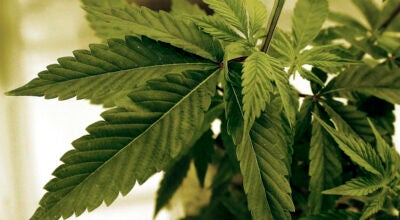Snowfall won’t alleviate drought
Published 9:40 am Wednesday, March 13, 2013

A van drives through a small puddle of water on Main Street across from Godfather’s Pizza and Hanson Tire on Tuesday afternoon in an area where there is typically flooding in the spring. –Sarah Stultz/Albert Lea Tribune
Recent snowfall across Minnesota will do little to alleviate the dry soil conditions across the state, even if some areas experience spring flooding, said the state’s climatologist last week.
Roughly 70 percent of Minnesota remains in an extreme drought or severe drought, according to a Minnesota Department of Natural Resources news release.
The U.S. Drought Monitor released last Thursday showed Freeborn County as being in extreme drought.
“All the snow that has fallen over the winter by and large remains on top of the landscape, a landscape that is largely frozen,” said State Climatologist Greg Spoden. “Now the dust remains beneath the concrete.”
Spoden said because the ground is frozen, much of the snow that is melting will flow over the land, leaving it drought-stricken once the waters subside.

Minnesota drought map
Red: Extreme drought
Orange: Severe drought
Tan: Moderate drought
Yellow: Abnormally Dry
Source: U.S. Drought Monitor
“First the snow has to leave before the soil unfreezes,” he said. “So we can’t face a situation really where the soil will thaw and allow a significant infiltration of that snowpack.”
At the same time there are threats of flooding across the state.
According to the state climatology office, the liquid content of the present snowpack as of the end of last week ranged from 1 to 4 inches in most areas. Snow water equivalence values in some sections of the upper Red River Basin, the upper Minnesota River basin and the upper Mississippi basin are in excess of 5 inches. These values are high for mid-March.
The climatology office stated that in addition to causing a spike in river flow, snowmelt runoff will elevate water levels on wetlands and lakes.
But, it stated, the soil moisture will remain mostly unchanged until spring because of the frozen soil. Only a fraction of the precipitation that fell over winter will make it into the ground.
Dean Adams, of Glenville and co-owner of Adams Grain Co., said he is optimistic the dry cycle will end.
“Over the years, I’ve never seen a prolonged drought in this area,” said Adams, who has been farming corn and soybeans for 40 years. “But that doesn’t say it won’t happen.”
He said though the moisture the area has received in the last few weeks helps some, but because the ground is still frozen, most of that water runs off.
The most beneficial time to get rain is the end of March or first part of April prior to planting, he said. He usually hopes to be planting by April 20.
Spoden agreed.
He said the average March through May rainfall in Minnesota ranges from 6 to 8 inches.
“If we get at least that, we’ll be fine for the spring planting season,” he said. “But to replenish those desperately dry subsoils, we’ll have to exceed that 6- to 8-inch amount.”
The latest outlook from the Climate Prediction Center, a branch of the National Weather Service, calls for above average precipitation from March through May for the eastern half of Minnesota and for equal chance of above or below normal precipitation for the western half.
Minnesota’s drought is the result of abnormally dry weather beginning in fall of 2011.
The drought was heightened by a snow-sparse winter in 2011 and 2012, combined with moisture deficits of an average of 5 inches or more of precipitation across the state last summer.




